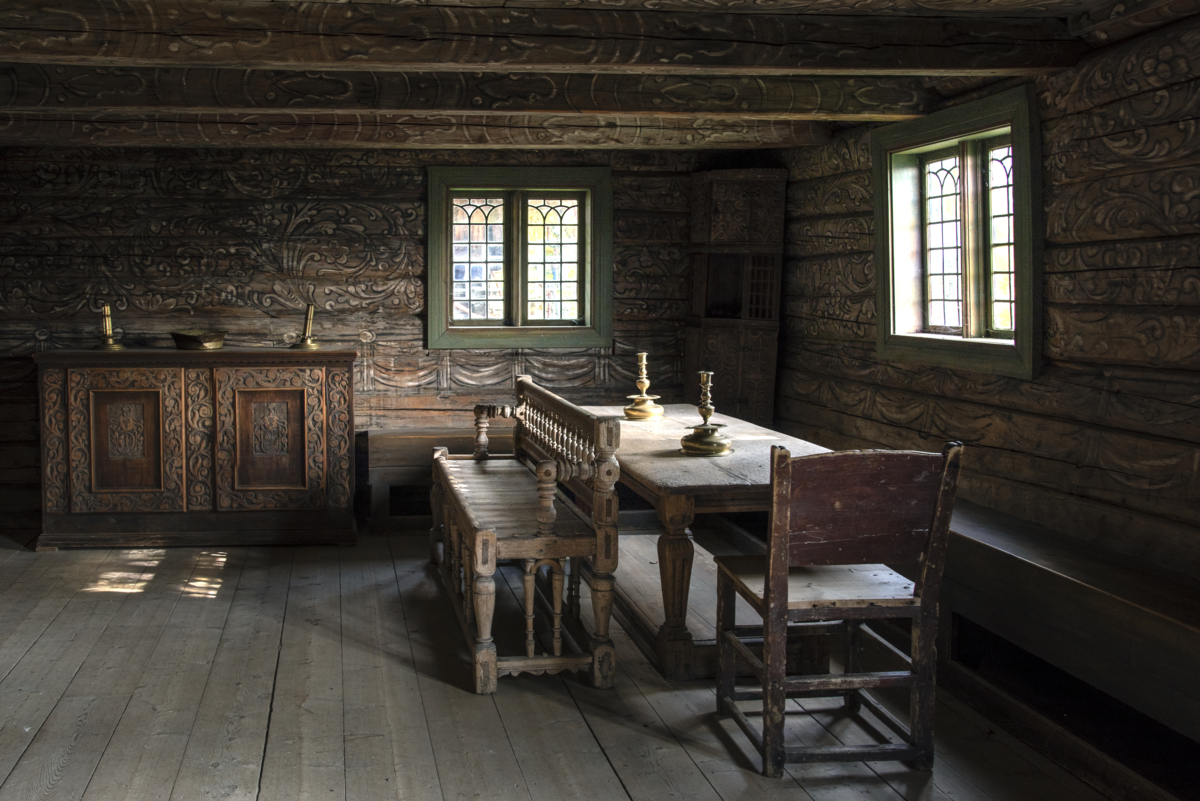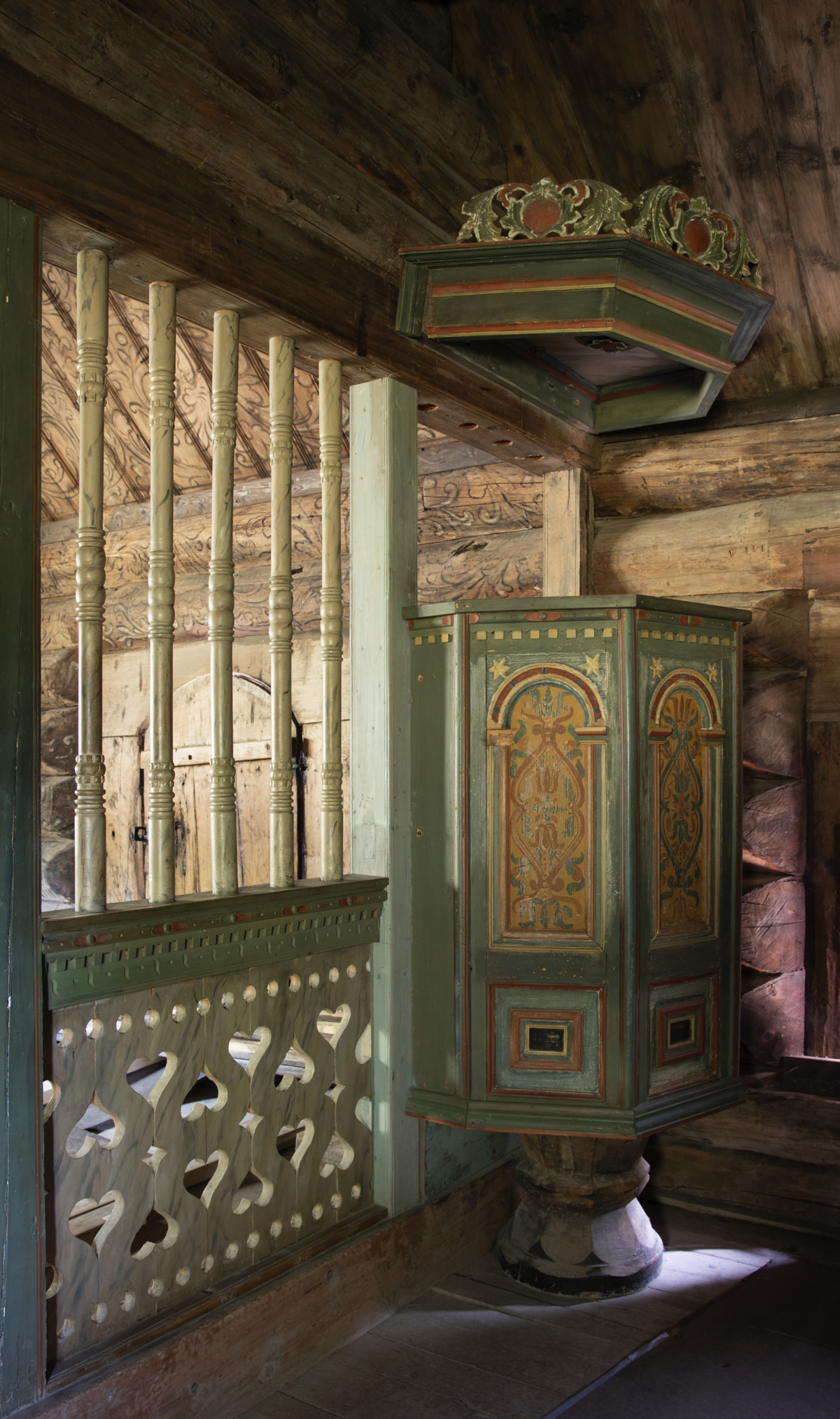
Photo: Camilla Damgård/Maihaugen
The Isum chapel and the Isum house
A piece of Norwegian Medieval history
During the Middle Ages, many large farms had their own private chapels known as fortified churches. In Sør-Fron, where Isum is located, there may have been as many as ten such chapels. Isum Farm was owned by the archbishop during the medieval period and became crown property after the Reformation. In 1624, the farm was referred to as Herre-Isum, indicating its prominent residents. In 1633, Hans Eggertsen, the sheriff of Gudbrandsdalen, took over the farm, and it remained the residence of sheriffs until around 1720.
The Isum Chapel was rebuilt at Maihaugen with the support of Lillehammer’s women during the introduction of women's suffrage. Historical records from the 1700s mention a medieval chapel on Isum Farm, but tree-ring analysis shows that the timber dates back to the early 1600s. The chapel was reconstructed as a private church, though it was likely a long loft originally located on the farm.




